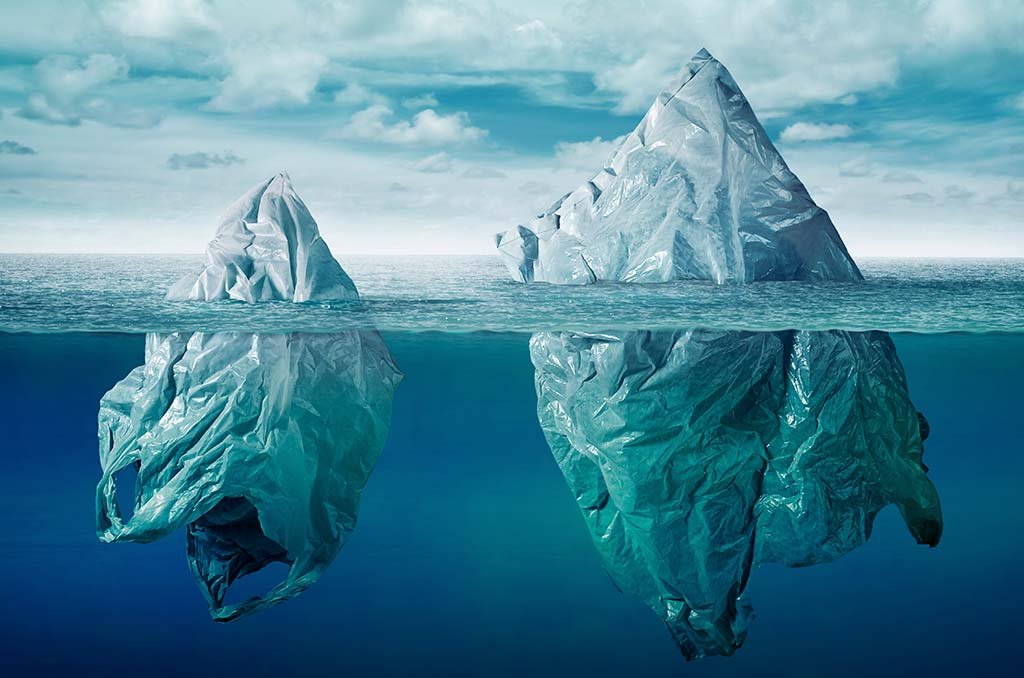EU Guideline on the reduction of the impact of certain plastic products on the environment. What do you need to know?
Plastic is a material that is frequently used by people in different ways. Since the 1960s, the global production of plastics has increased 20-fold and reached 322 million tons in 2015. A further doubling of this number is expected in the next twenty years. Despite the versatility of plastic and the diversity of its uses, around 25.8 million tonnes of plastic waste are still produced in Europe every year, of which only 30% is recycled. The large-scale production of plastic and the incineration of plastic waste cause enormous CO2 emissions worldwide. In concrete terms, this could be 400 million tons of CO2 per year. In addition, a large amount of plastic waste, an estimated 2 to 4% of global plastic production per year, is also regularly dumped into the ground or into the sea. This waste can then be easily transported over great distances, so that it is washed ashore elsewhere in the world, broken down by wind and weather or leads to large roaming rubbish dumps. As a result, plastic (waste) ends up in the environment all over the world, which not only causes enormous environmental damage, but also major economic damage. Moreover, this phenomenon is exacerbated by the growing amount of plastic waste that is mainly produced “for single use”. This means that plastic products are used only once by people and are therefore rarely recycled. This includes products such as disposable cups, straws or cutlery, for which plastic is widely used because of its lightness, low cost and practical properties.
EU Plastic Strategy
Given the foregoing, because the plastic is produced, used and disposed of on such a large scale at the expense of the environment and without optimally exploiting the benefits of recycling, the European Commission has devised an action plan to prevent future economic and environmental damage. In this action plan, the Commission identifies plastics as a priority and commits itself to “develop a strategy to address the challenges of plastics across the value chain, taking into account the entire life cycle”.
The aim is therefore to make all plastic packaging recyclable by 2030 at the latest. As part of this pursuit of a new plastics economy, the European Commission wants reuse, repair and recycling to be taken seriously in the design and production of plastics and plastic products, and more sustainable materials to be developed and promoted. In this way, the negative environmental impact of plastic production and combustion would be significantly reduced, not only reducing CO2 emissions, but solving the annual problem of millions of tons of plastic waste in the sea.
EU Guideline to reduce the impact of certain plastic products on the environment
The European Commission has drawn up the European Single Use Plastic (SUP) directive to develop the EU Plastic Strategy, especially when it comes to reducing plastic waste in the sea. The aforementioned directive is due to be implemented by all EU member states by July 2021 and contains a number of concrete measures, which also have consequences for companies dealing with plastic products. The most important measures that will apply from that moment on in all EU member states, including the Netherlands, are discussed in turn below.
The ban on single-use plastic products. Suitable, more durable and affordable alternatives are available for many single-use plastic products. Including easily recyclable/compostable products or plastic products that can be refilled or reused within their lifespan for the same purpose for which they were designed. Therefore, in order to limit the adverse environmental impact of single-use plastic products, it will be prohibited from 2021 to distribute or sell these single-use plastic products. Such plastic products include cutlery (knives, forks and spoons) and plates, stirrers and straws, food and drink containers made of EPS (Styrofoam) that can be eaten or drunk directly from, and disposable cups and containers. The directive also covers all types of plastic, so that no exceptions are made for oil-based plastics (such as HDPE or PS) and biobased plastics (such as bio-PE or PLA).
Reduce of the use of plastic products. However, for some single-use plastic products, no suitable and more sustainable alternatives exist yet. And because the European Commission expects the consumption of such single-use plastic products to increase further, the EU member states must take the necessary measures under this directive to achieve a clear reduction in the consumption of those products by 2026. Incidentally, this must not be detrimental to food hygiene or food safety. A suitable measure in this context is, for example, encouraging the use of products that can be reused and ultimately also recycled. However, if Member States decide to implement this obligation by means of market restrictions, the measures must in any case be proportionate and in no way discriminatory. Whatever measures the EU member state chooses the reduction in the use of single-use plastic products must in any case be measurable, in other words significant.
Expansion of producer responsibility. Another important measure to be taken by the EU Member States in the context of this directive is the extension of the responsibility of producers. This includes, first of all, the costs for the collection and recycling of single-use plastic products, for which there are as yet no suitable and sustainable alternatives. These costs will have to be borne by the producer of single-use plastic products according to the ‘polluter pays’ principle and will serve to cover the necessary costs of waste management and cleaning up litter. The exact amount must also not exceed the necessary costs and must be set in a transparent manner for the products in question. In addition, the responsibility of the producer is also extended with regard to awareness-raising measures to prevent and limit the litter of plastic products. It is intended that certain single-use plastic products should be clearly and conspicuously marked to make it clear to consumers that the packaging contains plastics, how and where to dispose of the packaging after use and to inform the consumer of the negative effects of inappropriate waste disposal to the environment. However, the costs for this will have to be borne by the producers.
The single-use plastic products will therefore have to make way for sustainable alternatives in the short term. Although the measures to this end must in principle be implemented by the Member States, they are also directly affected and in particular national companies. At Law & More we understand that the drastic change in the field of plastic production that awaits your company can lead to various questions: are your plastic products intended for single use or are they a good alternative in your case? And does a total ban on plastic products apply in your case, or does a reduction in use perhaps apply to your plastic products? Would you like to know which other concrete steps your company still has to take in the context of the above guideline, or do you have any other questions? Then contact Law & More. Our lawyers are experts in European law and environmental law and are happy to help you! We will of course keep an eye on further developments in the field of EU Plastic Strategy for you on our sustainability website and in our blogs.





